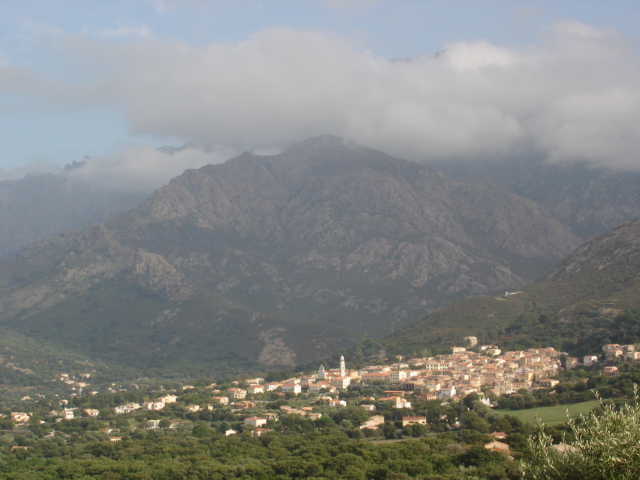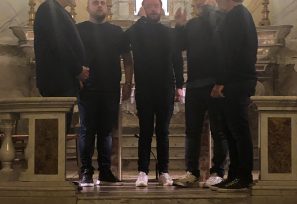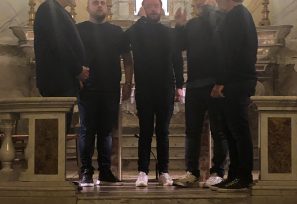A gateway to the great outdoors and a bastion of religious traditions... A host of craftsmen and producers have chosen this impressive village which occupies more than a quarter of the surface area of Balagne. It is also the departure point of the famous GR20 long-distance hiking route.
At the foot of Montegrosso and in the heart of Balagne, Calenzana is a large rural village of 2000 inhabitants and its area of 1800 ha ranks it among the largest municipalities in France. High historical place, it experienced, from the 16th to the 18th centuries, a significant demographic expansion by welcoming all the populations dispersed on its immense territory (more than 18,000 hectares) and in particular those of the seaside (Pieve de Sia), coming seek intramural security. The 3000 inhabitants of the time gave the village its current configuration and imposed the construction of a new church (early 17th century) and then a very large brotherhood (mid 19th century). On the campanile of the baroque Saint Blaise church, a plaque recalls that in 1732 German mercenaries invaded Calenzana. They found two factions very busy fighting among themselves. But as soon as the soldiers were seen, the belligerents joined forces to wage a fierce battle in which the women of the village actively participated with stones, boiling oil and ... beehives full of bees! Calenzana, which was one of the orchards of Corsica, retains rural activity around vines, olive trees, honey, sheep and goat breeding, producing a renowned cheese. While keeping its agro-pastoral character, it has become the obligatory point of passage for discovery tours of Haute-Balagne and the starting point of the Tra Mare è Monti and the mythical GR 20, the 1st of the 15 stages of which connects the village. at the refuge of Ortu di u Piobbu (almost 7 hours of walking for 1500 m. of vertical drop!). Sights... Saint-Blaise Church: A Baroque church, whose construction began in 1691, with a split-level facade of pilasters and sculpted cornices. Among other notable items, it houses a main altar of multicoloured marble, an organ, a sculpted balustrade and a polished porphyry tabernacle. The nearby 4-level bell tower of Baroque style bears a remembrance plaque in honour of the German mercenaries massacred in 1732. Opposite St Blaise church, "A Casazza", the chapel of the Sainte Croix friary. It is 19th-century, except for one of the facades, a vestige of the previous building which was added to the list of Historical Monuments of local interest on 2 March 1981. Sainte-Restitude Chapel: built in the 11th and 12th century on the site of the old Roman necropolis, the church is dedicated to the martyred Saint Restitude who is venerated every year on Easter Monday and on the first Sunday after 21 May. Saint Antoine district: Saint-Antoine chapel, the I Cannoni Suprani oratory, and the house where the Venerable Bernardin was born. Nature sites: forests of A Flatta and Bonifato, the Argentella site, and Crovani bay. Events: religious festival and Sainte Restitude fair (end of May), and a music festival (end of August)
Features
-
Services
- Cash point
- Coach access
- Guided tours
- Restaurant
- Set down on-site for groups
- Spot photo
- Tour free of charge
-
Equipments
- Bar
- Car park
- Exhibition space
- Restaurant
- Sustainable development (Waste management)
-
Visit
-
Individual visit :
-
Group visit :
-
Individual visit :
-
Activities
- Activity
- Concert
- Handicrafts workshops
- Product tasting
To know
-
Animals welcome
Pets not accepted










